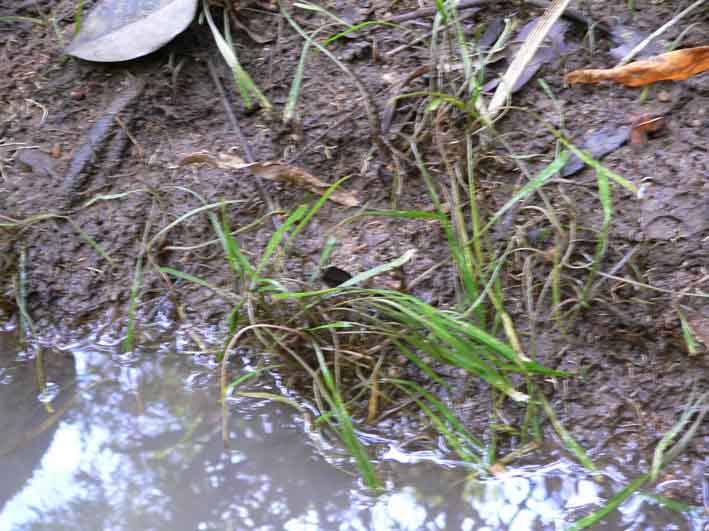 |
Habitat at the Yot Dome Wildlife Sanctuary on the bank of a stream at low water. The long leaves will wither and the plant will thrive short leaves and maybe thrive a spathe.
photo Bawn |
|
 |
Flowering plants from the natural habitat.
coll.NJT02-31
photo Jacobsen
|
|
 |
Shipment of fresh collected submerged growing plants. Leaves up to 50 cm.
coll. Lim
photo Jacobsen |
|
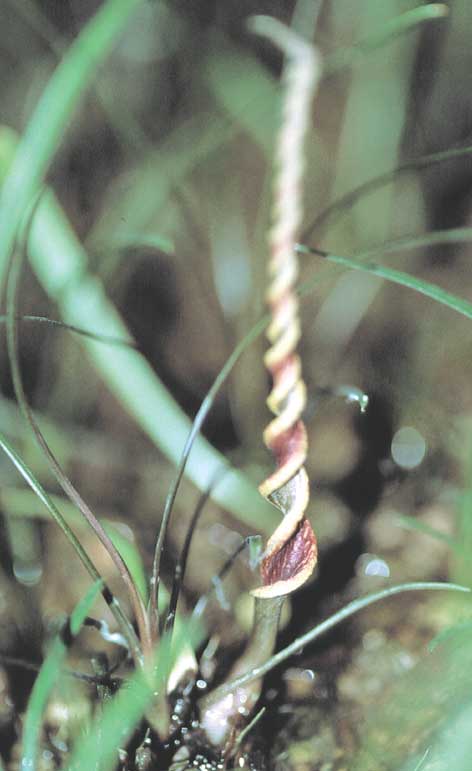 |
Showing the relative short tube of the spathe.
coll.NJT02-31
photo Jacobsen
|
|
| |
|
|
|
 |
The spiral limb opens wide at maturing
coll. Lim, cult. B1336
|
|
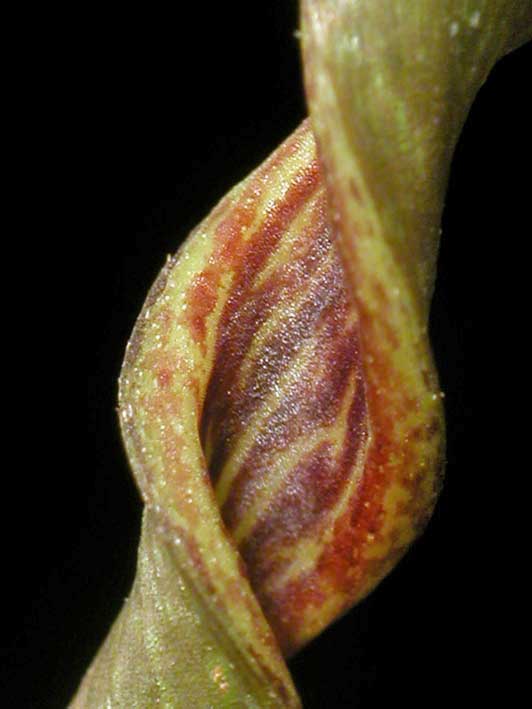 |
As all C. crispatula plants, var. kubotae has more or less developed red lines or spots on the limb.
coll. Lim, cult. B1336
|
|
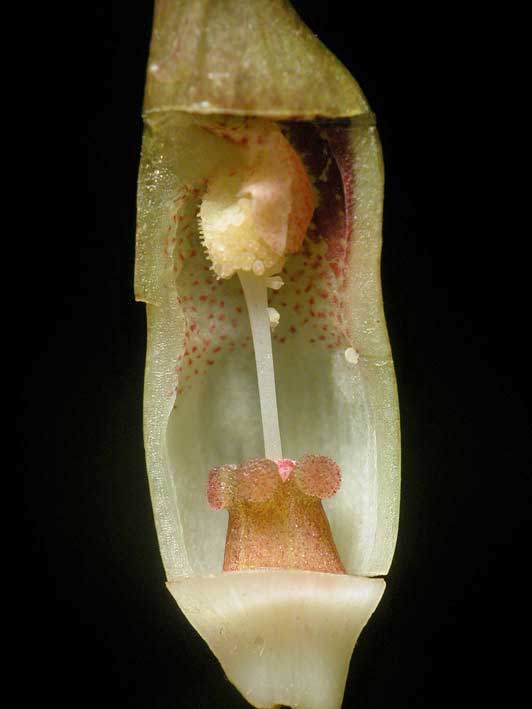 |
The same holds for the slight constricted kettle.
coll. Lim, cult. B1336
|
|
 |
The olfactory bodies , within the circle with stigmas a bit reddish, unseal.
coll. Lim, cult. B1336
|
|
| |
|
|
|
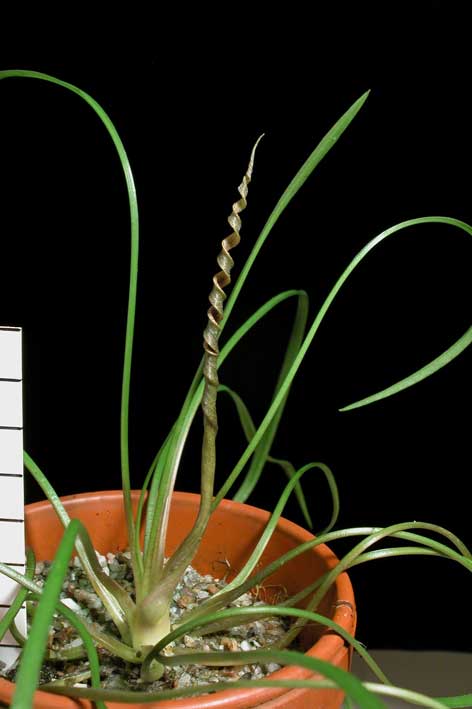 |
The ruler is in cm.
coll. Schöpfel, cult. B1303
|
|
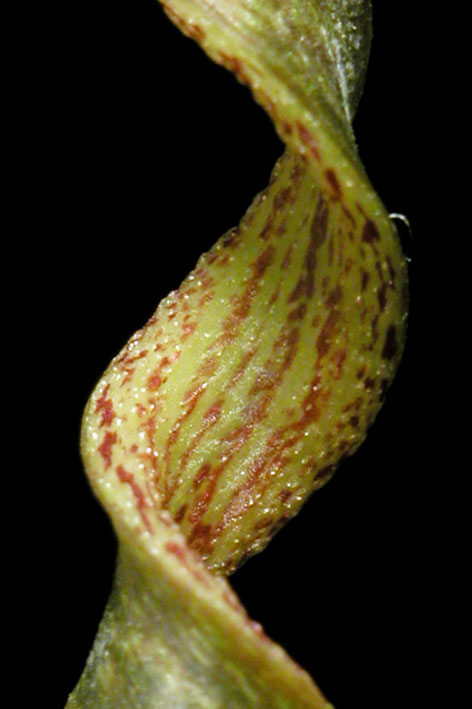 |
Here are the red lines less pronounced
coll. Schöpfel, cult. B1303
|
|
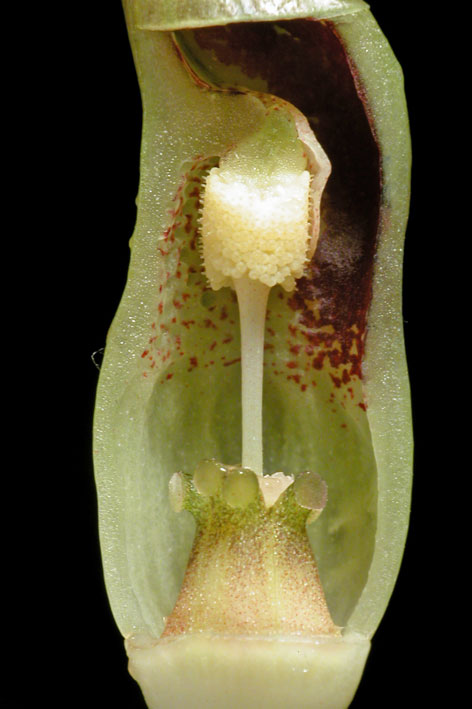 |
Normal in crispatula are the 'light windows' or alveoli in the kettle wall opposite the male flowers (top left).
coll. Schöpfel, cult. B1303
|
|
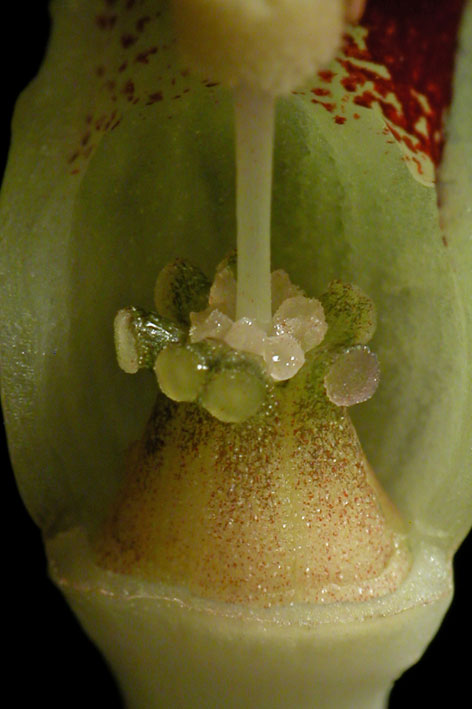 |
The number of female flowers varies in general from 4 to 7. White olfactory bodies
coll. Schöpfel, cult. B1303
|
|
| |
|
|
|
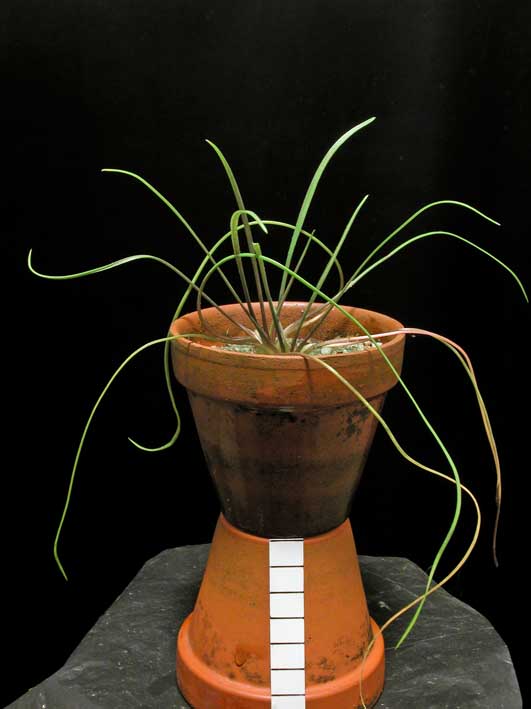 |
An emerged cultivated var. kubotae with the longer summer leaves withering and thriving shorter erect leaves off December. In one or two months it will flower.
coll. Lim, cult. B1336
|
|
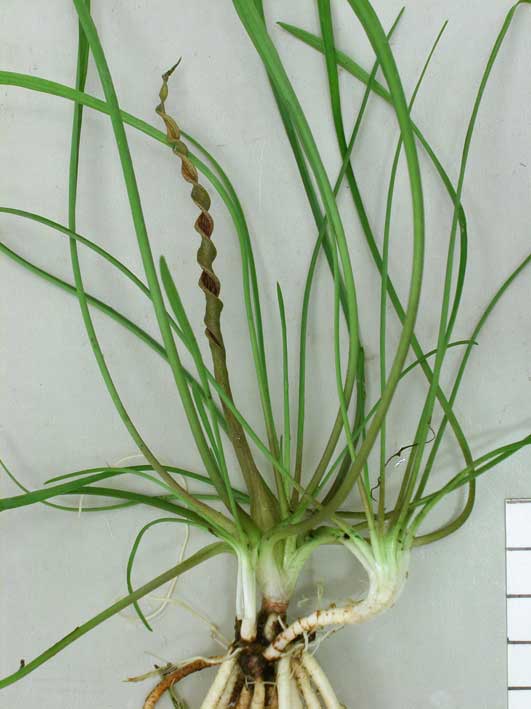 |
An uprooted plant to be herbarized. Note short runners. Another character is that the leaves spread wide just above the soil.
coll. Schöpfel, cult. B1303
|
|
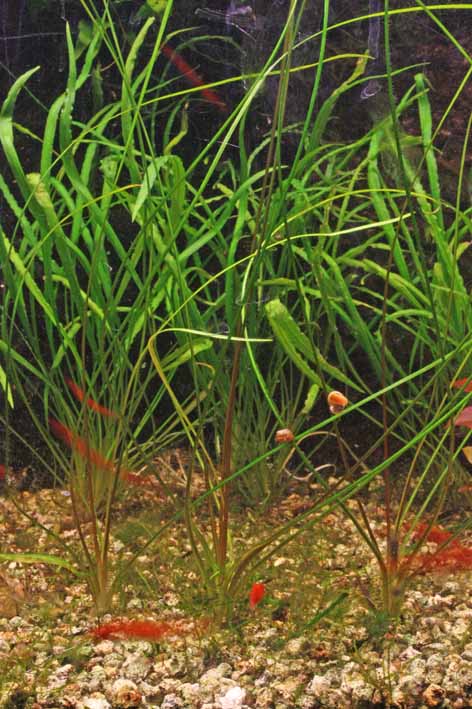 |
Var. kubotae in an aquarium (three rosettes in the foreground). Here also the leaves spread out.
coll. Lim, cult. B1336
|
|
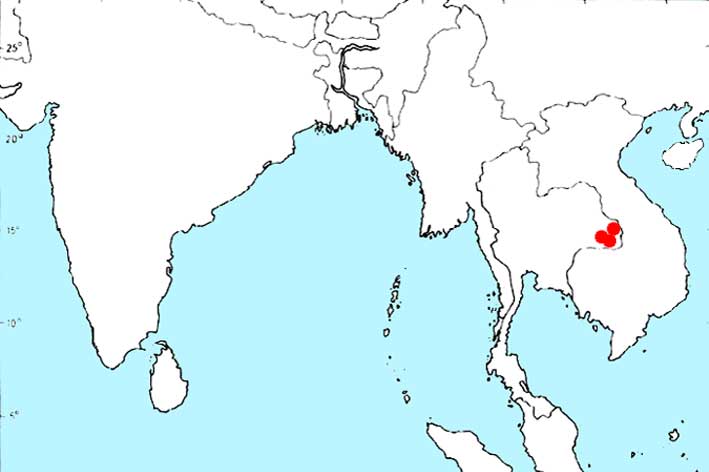 |
Distribution of C. crispatula var. kubotae on the Khorat plains in NE Thailand.
|
|
| |
|
|
|
These plants have a seasonal rhythm in nature, growing submersed in the river during high water level and drying out on the banks
at low level for months. The plant flowers and survive with new small leaves. Cryptocoryne crispatula var's balansae, flaccidifolia and tonkinensis grow the whole year submerged and keep their long leaves. Cryptocoryne crispatula var. kubotae submersed in an aquarium holds its long leaves (forever?).
For reference to the other plants and more literature see the page on the crispatula group.
Updated January 2006, correction map Novmber 2016 |
Literature:
- Jacobsen er al. 2015. A new variety of Cryptocoryne crispatula Engl. (Araceae) from Thailand. Thai Forest Bull. (bot) 43: 104-110. (Document service)
|
|